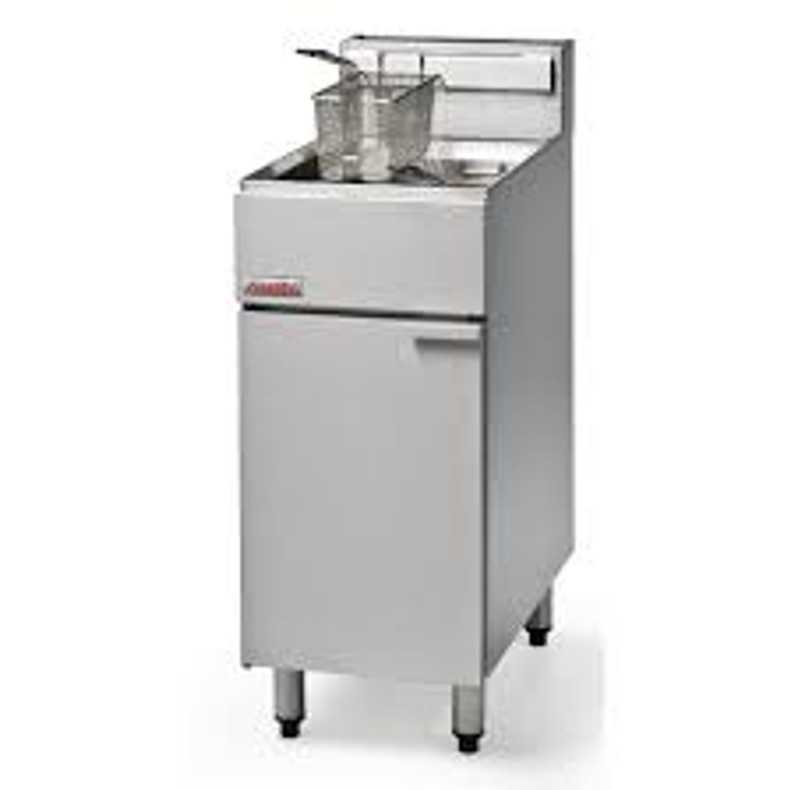There are currently four main types of gas fryers, each transferring heat in a specific way to create a "cold zone" at the bottom of the vat, which prolongs oil life by preventing overcooking of sediment.
Tube Fryers
-
Tube fryers feature stainless steel tubes running through the centre of the vat, conducting burner flames which heat the oil.
-
Downsides: food on tubes can continue cooking, harming oil life; tubes are harder to clean and can lose some heat up the flue.
Target Fryers
-
These fryers use a U-shaped gas manifold, with jets directing flames at metal targets designed to deflect heat into the sides of the vat.
-
Common brands: Frymaster, Garland, Fastfri, Cobra, Waldorf, Blue Seal.
-
Advantages: no obstructions inside the vat, easy cleaning; disadvantage: heat can weaken the vat, leading to reduced lifespan, and heat loss up the flue.
Infrared Fryers
-
Infrared fryers use a gas-air mixture ignited through a metal mesh along each vat side, producing radiant red heat for efficient oil warming.
-
Noted for a clean burn, gentle vat impact, and high efficiency.
High-Performance Operation (HPO) Fryers
-
Designed for high-volume usage (e.g., stadiums, busy fish and chip shops), using ceramic plates and forced air fans to push a gas-air mix for intense heating.
-
Run at higher gas pressures and deliver reliable, rapid recovery times.
Obsolete Type
-
Plate-heated fryers, where burners heated a plate at the bottom, transferring heat to oil, are no longer produced due to efficiency and design limitations.
Each type is designed to maintain a hot oil zone in the middle and a cooler "cold zone" at the bottom. This cold zone preserves oil quality by preventing sediment and stray food from burning, saving on oil costs and maintenance.

